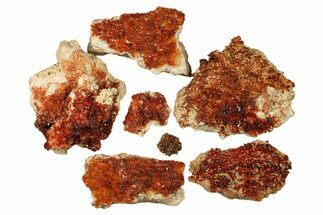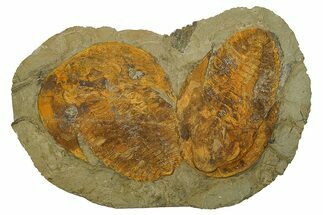This Specimen has been sold.
5.3" Golden Beam Calcite Crystal Cluster - Morocco
This is a gorgeous, honey colored beam calcite crystal cluster that's part of a new find from the Atlas Mountains of Morocco. The largest crystals on this plate have a golden-yellow coloration. They sit atop a bed of sharp calcite crystals that contain sparkling inclusions that gathered at the tops of the crystals near the conclusion of their formation.
The largest crystal is 2.9" long. The entire specimen measures 5.3" by 3.4" and has a flat base that allows for aesthetic presentation of the plate without the need for a display stand.
The largest crystal is 2.9" long. The entire specimen measures 5.3" by 3.4" and has a flat base that allows for aesthetic presentation of the plate without the need for a display stand.
About Calcite Crystals
Calcite crystals are a form of calcium carbonate (CaCO₃) known for their diverse shapes, transparency, and vibrant range of colors. They typically form in rhombohedral, scalenohedral, or prismatic shapes, often with well-defined, sharp edges and glossy surfaces. Calcite crystals are often translucent or transparent, sometimes displaying a double refraction effect where objects viewed through the crystal appear doubled. They can appear in various colors—white, clear, yellow, pink, blue, green, and orange—depending on impurities or trace minerals.
A notable characteristic of calcite is its reaction with weak acids like vinegar, which causes it to effervesce, or fizz, as it releases carbon dioxide. This property makes calcite crystals a key tool in geological identification and studies. Calcite forms in many environments, from sedimentary rocks like limestone and marble to hydrothermal veins.
Calcite crystals are a form of calcium carbonate (CaCO₃) known for their diverse shapes, transparency, and vibrant range of colors. They typically form in rhombohedral, scalenohedral, or prismatic shapes, often with well-defined, sharp edges and glossy surfaces. Calcite crystals are often translucent or transparent, sometimes displaying a double refraction effect where objects viewed through the crystal appear doubled. They can appear in various colors—white, clear, yellow, pink, blue, green, and orange—depending on impurities or trace minerals.
A notable characteristic of calcite is its reaction with weak acids like vinegar, which causes it to effervesce, or fizz, as it releases carbon dioxide. This property makes calcite crystals a key tool in geological identification and studies. Calcite forms in many environments, from sedimentary rocks like limestone and marble to hydrothermal veins.
SPECIES
Calcite
LOCATION
Atlas Mountains, Morocco
SIZE
5.3 x 3.4", Largest crystal is 2.9" long
CATEGORY
ITEM
#159519
 Reviews
Reviews














